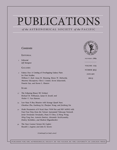
PUBLICATIONS OF THE ASTRONOMICAL SOCIETY OF THE PACIFIC
Scope & Guideline
Illuminating the Cosmos with Groundbreaking Research
Introduction
Aims and Scopes
- Observational Astronomy:
The journal publishes extensive research on observations from ground-based and space telescopes, covering a range of wavelengths from radio to gamma rays. This includes studies on celestial phenomena such as supernovae, exoplanets, and cosmic microwave background. - Astrophysical Modeling:
Research involving theoretical models that explain astrophysical phenomena, including stellar evolution, galaxy formation, and cosmology. This encompasses both analytical and computational approaches to understanding the universe. - Instrumentation and Techniques:
A significant focus on the development and application of new astronomical instruments and observational techniques, including advanced detectors, adaptive optics, and data analysis methods. - Data Science and Machine Learning:
The journal highlights the integration of data science methodologies, such as machine learning and statistical analysis, in the processing and interpretation of astronomical data. - Interdisciplinary Research:
Encouraging collaborations that bridge astronomy with other scientific fields, addressing topics like astrophysics, planetary science, and astrobiology.
Trending and Emerging
- Exoplanet Research:
There is a significant increase in studies related to the detection and characterization of exoplanets, particularly using advanced techniques like transit spectroscopy and direct imaging, reflecting the growing interest in planetary systems beyond our own. - Gravitational Wave Astronomy:
Research related to gravitational waves and their electromagnetic counterparts has surged, driven by the success of LIGO and other observatories, indicating a new era in multi-messenger astronomy. - Astrobiology and Habitability Studies:
Emerging themes around the potential for life beyond Earth, including studies on planetary atmospheres and habitability, are gaining prominence as the search for extraterrestrial life intensifies. - Machine Learning Applications:
The application of machine learning algorithms in data analysis, classification, and predictive modeling is becoming increasingly prevalent, reflecting a shift towards data-driven methodologies. - Large-Scale Surveys and Big Data:
The trend towards large-scale astronomical surveys, such as those conducted by the Vera C. Rubin Observatory and the James Webb Space Telescope, highlights the importance of big data in contemporary astronomical research.
Declining or Waning
- Traditional Survey Methods:
Research focusing on traditional astronomical survey techniques has waned as newer technologies and methods, such as deep learning algorithms and advanced imaging techniques, become more prevalent. - Basic Stellar Classification:
There has been a decline in the number of studies dedicated solely to basic stellar classification, as the field moves toward more complex analyses involving multi-dimensional data and machine learning. - Static Observational Studies:
The focus on static observations of celestial objects has decreased, with a shift towards dynamic studies that explore variability and transient phenomena. - Single-wavelength Studies:
Research limited to single-wavelength observations is becoming less common as multi-wavelength approaches gain traction, providing more comprehensive insights into astronomical events. - Historical Observational Techniques:
Interest in older observational techniques has diminished, with a preference for modern, high-resolution methods that utilize advanced technologies.
Similar Journals
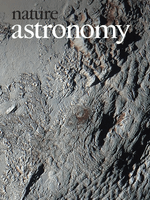
Nature Astronomy
Illuminating the Universe: High-Impact Findings for the Astronomical Community.Nature Astronomy, published by NATURE PORTFOLIO, stands at the forefront of the field of Astronomy and Astrophysics. Since its inception in 2016, this esteemed journal has rapidly ascended to a prestigious position, achieving a Q1 ranking in the Astronomy and Astrophysics category and securing an impressive 6th place out of 90 journals in the Scopus rankings, placing it in the 93rd percentile. With a focus on disseminating pioneering research, Nature Astronomy provides a vital platform for the dissemination of high-quality, impactful findings across various aspects of astronomical science. Researchers, professionals, and students alike will find a wealth of knowledge and innovative perspectives within its pages, enabling them to stay ahead in a rapidly evolving field. Although it does not offer open access, the journal's commitment to excellence and its influence in shaping the future of astronomical research make it an indispensable resource for anyone serious about advancing their understanding of the cosmos.
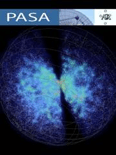
PUBLICATIONS OF THE ASTRONOMICAL SOCIETY OF AUSTRALIA
Exploring the Frontiers of Astronomy and Beyond.Publications of the Astronomical Society of Australia, published by Cambridge University Press, stands as a distinguished platform for advancing knowledge in the realms of Astronomy, Astrophysics, Space, and Planetary Science. Hemmed in the United Kingdom, this journal is recognized for its outstanding contributions, reflected in its status as a Q1 journal in both Astronomy and Astrophysics, along with Space and Planetary Science categories as of 2023. With a solid impact factor, it ranks impressively at #23 within its Scopus category, firmly placing it in the competitive 75th percentile. This publication facilitates open discourse and innovative research from its inception in 1996 to the present year of 2024, providing an essential resource for researchers, professionals, and students eager to deepen their understanding of cosmic phenomena. By embracing rigorous peer-review standards and a commitment to scholarly excellence, the journal not only contributes to the scientific community but also fosters the next generation of astronomical research.
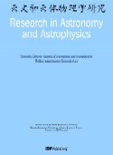
Research in Astronomy and Astrophysics
Connecting Minds Across the Celestial Realm.Research in Astronomy and Astrophysics, published by the National Astronomical Observatories under the Chinese Academy of Sciences, stands out as a pivotal platform for disseminating cutting-edge research in the fields of astronomy and astrophysics. With an ISSN of 1674-4527 and an E-ISSN of 2397-6209, this esteemed journal operates as an open access publication, ensuring that high-quality research is available to a broad audience without any financial barriers. As of 2023, it holds a commendable Q2 quartile ranking in both Astronomy and Astrophysics, as well as Space and Planetary Science, reflecting its importance and revered position among leading journals. Spanning from 2009 to 2024, it is geographically rooted in the United Kingdom but engages a global readership and author base, making significant contributions to the rapidly evolving discourse in astrophysical studies. Moreover, its rankings in Scopus underscore its relevance, ranking 43rd out of 90 in Astronomy and Astrophysics and 61st out of 104 in Space and Planetary Science, placing it firmly within the competitive landscape of scientific research. Research in Astronomy and Astrophysics is dedicated to fostering innovation and communication within the scientific community, offering researchers, professionals, and students alike a valuable resource for collaboration and knowledge advancement.

COSMIC RESEARCH
Pioneering Research in Planetary ScienceCOSMIC RESEARCH is a prestigious academic journal dedicated to advancing the field of space science, particularly within the domains of aerospace engineering, astronomy, and planetary science. Published by MAIK NAUKA/INTERPERIODICA/SPRINGER, this journal has been a significant contributor to the scholarly discourse since its inception in 1968, with converged years showing robust publication activity until 2024. With a Q4 category ranking in various disciplines, including aerospace engineering, astronomy, and space science, the journal serves as a platform for disseminating innovative research and comprehensive reviews. Although not currently offering open access, COSMIC RESEARCH is renowned for its rigorous peer-review process, ensuring that only high-quality research is shared with the academic community. The journal's ISSN is 0010-9525 and its E-ISSN is 1608-3075. Researchers, professionals, and students alike can benefit from the insights and findings presented in this journal, making it an essential resource for anyone involved in the exploration of cosmic phenomena.
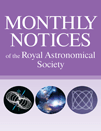
MONTHLY NOTICES OF THE ROYAL ASTRONOMICAL SOCIETY
Exploring the Cosmos, One Discovery at a Time.The MONTHLY NOTICES OF THE ROYAL ASTRONOMICAL SOCIETY (MNRAS), published by Oxford University Press, serves as a premier platform for the dissemination of significant research in the fields of Astronomy, Astrophysics, and Space and Planetary Science. Established in 1913 and with an impressive impact factor reflected in its 2023 Q1 rankings—13th in Earth and Planetary Sciences and 14th in Physics and Astronomy—this journal is renowned for its rigorous peer-reviewed articles, fostering advancements in our understanding of the universe. Researchers, professionals, and students alike benefit from its rich content, which spans a vast array of topics within its scope, from stellar dynamics to planetary formation. While the journal does not currently offer Open Access options, the scholarly contributions published herein are invaluable for pushing the boundaries of contemporary scientific inquiry and ensuring that the latest findings reach an engaged audience globally.

OBSERVATORY
Illuminating the Universe: A Hub for Astronomical ResearchOBSERVATORY, an esteemed journal in the realms of Astronomy and Space and Planetary Science, is published from the Rutherford Appleton Laboratory in the United Kingdom. With an ISSN of 0029-7704, this journal has provided a platform for innovative research and findings, particularly during its active publishing years from 1996 to 2013, 2015, and from 2017 to 2024. Although classified in the lower quartiles (Q4) in the latest 2023 category rankings for Astronomy and Astrophysics and Space and Planetary Science, the journal serves as a vital resource for researchers and students aiming to contribute to these fields. While it currently does not offer open access options, it continues to attract attention for its focus on both theoretical and applied aspects of astronomy. With a growing compilation of research, it aims to foster collaboration and knowledge dissemination among scholars dedicated to unraveling the complexities of our universe.

SOLAR SYSTEM RESEARCH
Navigating the Complexities of Our Solar SystemSOLAR SYSTEM RESEARCH, published by Pleides Publishing Inc, offers a comprehensive platform for the exploration and dissemination of scientific knowledge in the fields of Astronomy, Astrophysics, and Space and Planetary Science. With its origins tracing back to 1969, this journal provides a vital resource for researchers and professionals seeking to deepen their understanding of the solar system's complexities, including planetary formation, extraterrestrial geology, and the dynamics of celestial bodies. Although categorized in the Q4 quartile for both relevant disciplines, SOLAR SYSTEM RESEARCH remains committed to publishing high-quality research that contributes to advancing contemporary scientific discourse. Dedicated to fostering collaboration and innovation, the journal is indexed in Scopus and adheres to rigorous academic standards, making it an essential resource for students and professionals alike pursuing the latest developments in solar system studies.

PUBLICATIONS OF THE ASTRONOMICAL SOCIETY OF JAPAN
Bridging tradition and innovation in astronomy.Publications of the Astronomical Society of Japan is a prestigious, peer-reviewed journal dedicated to advancing the field of astronomy and astrophysics. Published by Oxford University Press, this journal provides a platform for high-quality research, fostering scientific communication among both established researchers and emerging scholars. With an ISSN of 0004-6264 and E-ISSN 2053-051X, it is recognized for its significant impact in its field, boasting a Q2 ranking in both Astronomy and Astrophysics and Space and Planetary Science as of 2023. The journal seeks to bridge traditional and innovative approaches to expand understanding of celestial phenomena, making it an essential resource for professionals, students, and researchers alike. Researchers can access a wealth of cutting-edge studies spanning theoretical and observational aspects of astronomy from its inception in 1996 to the present day. Although the journal operates under a traditional access model, it remains a respected forum for pivotal discoveries and discussions within the global astronomical community.

ASTROPHYSICS
Shaping the Future: Essential Research in Astronomy and AstrophysicsASTROPHYSICS, published by Springer/Plenum Publishers, stands as a crucial platform for the dissemination of groundbreaking research in the field of Astronomy and Astrophysics. Established in 1965 and continuing its legacy until 2024, the journal highlights significant advancements, theoretical frameworks, and observational data that collectively push the boundaries of our understanding of the universe. Although currently categorized in the Q4 quartile for Astronomy and Astrophysics and holding a Scopus rank within the 17th percentile, ASTROPHYSICS remains dedicated to offering rigorous peer-reviewed content that is essential for researchers, professionals, and students alike. While it does not provide open access, the journal's accessibility through institutional subscriptions ensures a wide reach among the academic community, allowing it to address the rising curiosity surrounding cosmic phenomena and contribute meaningfully to ongoing scholarly discourse. For those seeking to engage with the latest findings and methodologies in astrophysics, ASTROPHYSICS continues to serve as an indispensable resource.

Astrophysical Bulletin
Charting New Territories in Astrophysical ResearchWelcome to the Astrophysical Bulletin, an esteemed journal published by MAIK NAUKA/INTERPERIODICA/SPRINGER that has been contributing to the fields of Astronomy and Astrophysics since its inception in 2009. With a prominent Q3 rating in both Astronomy and Astrophysics and Instrumentation, this journal is designed to foster an understanding of astronomical phenomena through comprehensive research articles and groundbreaking discoveries. While currently not offering open access, it remains a vital resource for researchers and professionals looking to stay informed on the latest advances in the field, featuring a compelling selection of peer-reviewed studies that underscore its relevance and impact. The Astrophysical Bulletin ranks impressively in Scopus, making it a trusted platform for disseminating vital knowledge and new insights into our universe.